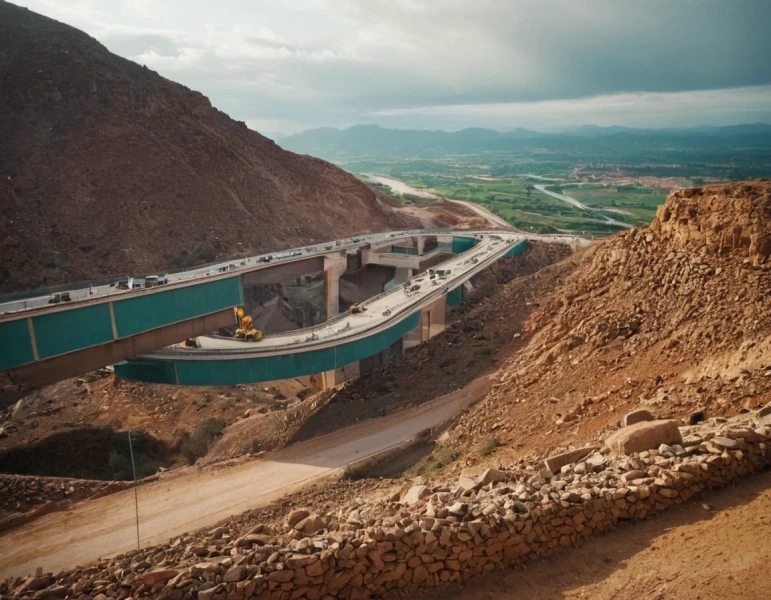Educa UNIVERSITY|SCIENCE AND ENGINEERING
Civil Engineering: My personal experience
Related Masters
Civil Engineering: My personal experience
If I told you that civil engineering is the backbone of modern society, would you believe me? Well believe me, because I've been working for years with concrete, steel, and all kinds of structures you see every day. From bridges you cross without thinking to roads you step on without looking, civil engineering underpins it all. Literally!
I've had the good fortune (or misfortune, depending on how you look at it) to be involved in projects of all kinds: from small retaining walls in suburban neighborhoods to large infrastructures like highways and dams. And you know what?If there is one thing I have learned, it is that civil engineering is not just numbers and plans; it is solving human problems with practical solutions.
What is Civil Engineering?

Civil engineering encompasses the design, construction and maintenance of infrastructures that are fundamental to society. We are talking about roads, bridges, tunnels, buildings, dams and sewage systems. Basically, everything you need to get around and live your day-to-day life. But, mind you, it's not just about building structures; it's about making sure they last, are safe and efficient.
A Little History
If you think that civil engineering is something recent, you're wrong. The Romans already left us a legacy with their aqueducts and roads. Yes, those same ones you can still see today. The crazy thing is that many of those constructions are still working or, at least, inspiring modern projects. Civil engineering is thousands of years old!
My First Experience: Learning to Beat
I remember my first project was a small bridge over a local river. It was nothing spectacular, but the pressure was brutal.Why? Because it wasn't just about putting in a couple of girders and paving. We had to make sure that the bridge would withstand the flooding of the river, that it wouldn't collapse under the weight of the trucks, and that it would also be easy to maintain. And I assure you, nothing is as simple as it seems.
That project taught me the basics: structural calculations, material resistance and how to make a work profitable without sacrificing safety. But above all, I learned that when theory meets practice, things always get complicated. In short, civil engineering is an eternal game of balancing cost, time and quality.
What Does a Civil Engineer Do?
Now, let's get serious: a civil engineer doesn't just design bridges or buildings. He or she also has to deal with everything that is unseen, but crucial for a construction site to work. Here are some of the key areas we work in:
- Structural Engineering: We design the basic structure of buildings and bridges. Here, mathematics and simulation programs are your best friends.
- Hydraulics: Everything related to water, from dams to sewage systems. Here, it's not just about making water flow, but making sure it doesn't cause disasters.
- Geotechnics: This branch studies the soil on which we build. If the ground is not suitable, it is useless for the building to be beautiful. It will sink, plain and simple.
- Transportation: We design roads, highways and transportation systems to make cities work better. Does traffic drive you crazy? Well, it's possible for a civil engineer to improve that...if they let him.
- Environmental Engineering: In this day and age, being sustainable is essential. So we also make sure that our constructions do not damage the environment.
Tools of the Trade
Nowadays, no one draws by hand. We use programs like AutoCAD, Civil 3D, and SAP2000 to model structures and foresee problems before they occur. Years ago, these calculations were done by hand (a nightmare!), but now, with one click we can see if a bridge will withstand the weight of a thousand trucks or if it will collapse in the first storm.
My Favorite Project: The Big Bridge
After years in the field, there was one project that earned a special place in my heart: the construction of a bridge over a rushing river. It was a challenge from day one. The structure had to be strong, but we couldn't block the flow of the river. In addition, flooding in the area was common, so we had to design additional defenses. In the end, the project was a success and to this day, when I drive by, I can't help but smile and feel proud. That's my little legacy.
The Future of Civil Engineering
In the future, technology will continue to change the way we build. Methods such as BIM (Building Information Modeling)are already revolutionizing the way we design and execute projects. In addition, sustainability and energy efficiency will become increasingly important. Imagine entire cities powered by solar energy and with electric transportation systems that do not harm the planet. That is what we civil engineers are designing today.
Conclusion
Civil engineering is the art of solving problems that most people don't even know exist. Every project is a battle against nature, time and costs, but when we get it right, the result is impressive. Have you stopped to think about how you got to work today or how the water got to your house?That's what I'm talking about.
At the end of the day, what we civil engineers do is create a better world. And although we don't always get the recognition we deserve, our works are there, speaking for themselves
.
Faculties
Trainings
The faculties embrace diverse academic disciplines and fields of study, opening doors to new perspectives and exploring different spheres of wisdom in a constantly evolving world.










